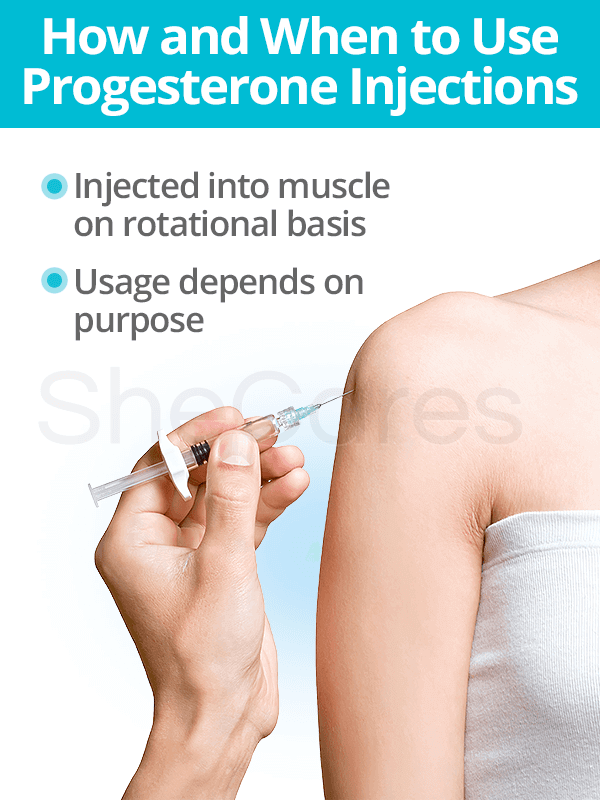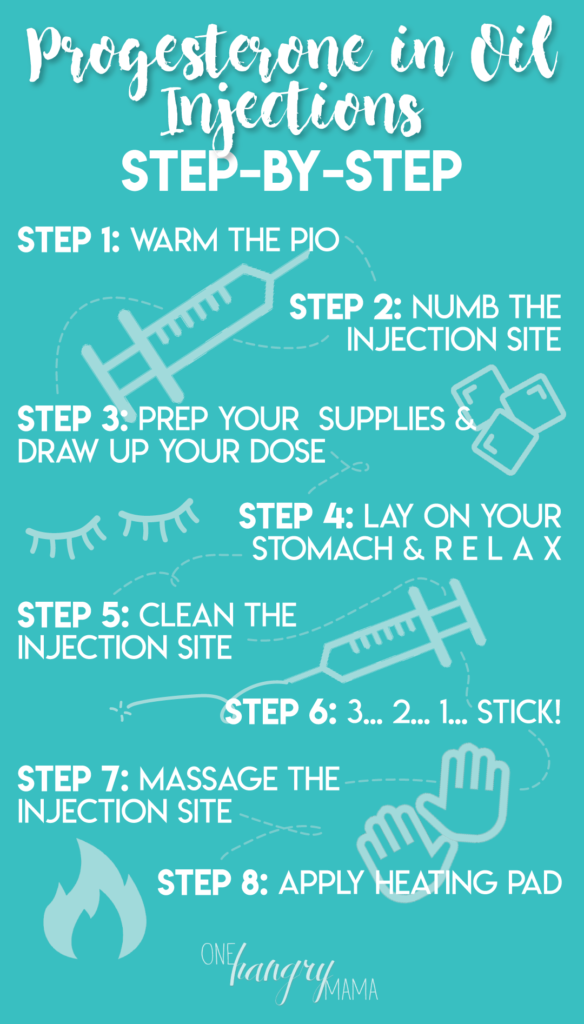How To Inject Progesterone In Oil

Millions of individuals undergoing fertility treatments or hormone replacement therapy rely on progesterone in oil (PIO) injections. Proper administration is crucial for treatment success and minimizing discomfort.
This guide provides essential information on how to safely and effectively administer a PIO injection, outlining the necessary steps from preparation to post-injection care. Precise execution is paramount; improper technique can lead to complications.
Preparing for the Injection
Gather your supplies: You will need a prescribed vial of progesterone in oil, two needles (typically one 22-25 gauge needle for drawing the medication and one 22-25 gauge needle for injecting, both 1 to 1.5 inches long), alcohol swabs, a clean bandage, and a sharps container for disposal.
Wash your hands thoroughly with soap and water for at least 20 seconds. Hygiene is essential to prevent infection.
Warm the oil: Gently warm the vial of PIO by rolling it between your palms for a few minutes. This reduces viscosity and makes the injection easier.
Drawing the Medication
Clean the vial: Swab the rubber stopper of the progesterone vial with an alcohol swab.
Prepare the syringe: Attach the larger gauge needle (drawing needle) to the syringe. Pull back the plunger to draw air into the syringe equivalent to the prescribed dose of progesterone.
Inject air into the vial: Insert the needle into the vial's rubber stopper and inject the air. This equalizes pressure and makes it easier to draw the medication.
Withdraw the medication: Turn the vial upside down and slowly pull back the plunger to draw the prescribed dose of progesterone into the syringe. Ensure no air bubbles are present.
Remove air bubbles: If air bubbles are present, gently tap the syringe barrel until the bubbles rise to the top. Push the plunger slightly to expel the air, being careful not to waste any medication.
Change the needle: Carefully remove the drawing needle and attach the injection needle.
Injection Site Selection and Preparation
Choose an injection site: The upper, outer quadrant of the buttock is the preferred injection site, specifically the gluteus maximus muscle. Rotate injection sites with each injection to prevent irritation and scarring.
Clean the injection site: Swab the chosen injection site with an alcohol swab in a circular motion, working outwards from the center.
Allow the alcohol to dry completely before proceeding with the injection. This helps to sterilize the area.
Administering the Injection
Position yourself comfortably: Stand facing a mirror to have clear view of the injection site, or lie down on your stomach.
Stretch the skin: Using your non-dominant hand, stretch the skin taut around the injection site.
Insert the needle: Hold the syringe like a dart and quickly insert the needle straight into the muscle at a 90-degree angle.
Aspirate: Gently pull back on the plunger slightly. If blood enters the syringe, remove the needle immediately and choose a different injection site.
Inject slowly: If no blood is aspirated, slowly inject the progesterone oil into the muscle. Injecting too quickly can cause pain and discomfort.
Withdraw the needle: Once the medication is fully injected, withdraw the needle smoothly and quickly.
Apply pressure: Immediately apply gentle pressure to the injection site with a clean bandage.
Post-Injection Care
Massage the injection site: Gently massage the injection site to help disperse the medication and improve absorption. This can also help reduce soreness.
Dispose of the needle safely: Immediately dispose of the used needle and syringe in a sharps container. Do not recap the needle.
Monitor for reactions: Watch for any signs of infection at the injection site, such as redness, swelling, pain, or drainage. Contact your healthcare provider if you experience any of these symptoms.
Important Considerations
Consult your healthcare provider: Always follow your doctor's specific instructions regarding dosage, injection frequency, and site rotation. They can provide personalized guidance based on your individual needs.
Proper disposal: Sharps containers are crucial for safe needle disposal. Check your local regulations for proper disposal methods.
Possible side effects: Common side effects of PIO injections include pain, swelling, redness, and bruising at the injection site. Less common side effects can include allergic reactions. Contact your doctor if you experience any concerning side effects.
Injection site reactions: If you experience persistent pain or hardening at the injection site, warm compresses can help. Talk to your doctor about other strategies for managing injection site reactions.
Medication storage: Store progesterone in oil according to the manufacturer's instructions, typically at room temperature and away from direct sunlight. Do not use if the medication is discolored or contains particulate matter.
Seek professional help: If you are uncomfortable administering injections yourself, ask your healthcare provider or a trained nurse to administer them for you.
Next Steps
Refer to your doctor's instructions for any further requirements on follow-up appointments and continued monitoring. If you have questions or concerns, contact your healthcare provider immediately.
Strict adherence to these guidelines will help ensure effective progesterone delivery, minimize potential complications, and contribute to successful treatment outcomes. Correct injection technique is non-negotiable for optimal health outcomes.

















:max_bytes(150000):strip_icc()/VWH-MichelaButtignol-IntramuscularInjectionsProgesteroneOil-Standard-a240aabce938475190777fedf95a88f0.jpg)
